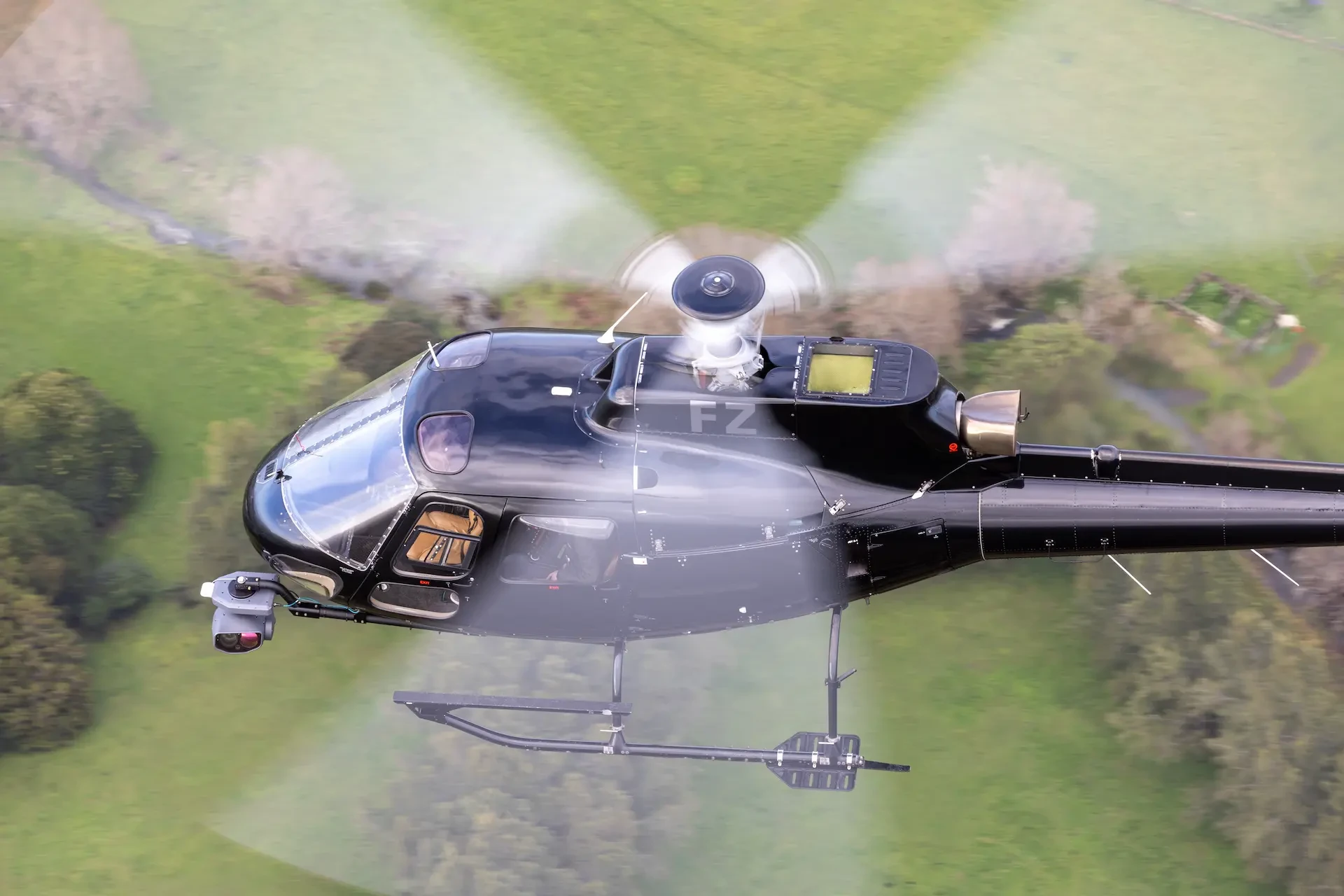When two companies that are leaders in complimentary fields merge, the combination of specialties can foster the development of products notably more advanced and capable than either could achieve alone. Shotover’s new M2 admirably illustrates that principle, incorporating cutting edge sensors and software in a groundbreaking gimbal mount to set a new standard in ISR turrets.
Modern intelligence, surveillance and reconnaissance (ISR) platforms utilizing multiple visual sensors in a gyro-stabilized mount have been around for many years, predominantly used by governmental and law enforcement agencies, and military or national defense forces. Good systems offer both daylight and thermal/infrared imaging to provide a broad range of visual capability, but the best systems out there have added a software-driven mapping overlay. Tom Churchill founded Churchill Navigation in 2005 and the Boulder, Colorado-based company first began offering its ARS (augmented reality system) overlays around fifteen years ago, effectively inventing a product that up until then, no one had even known they needed. Once on the market however, Churchill ARS products quickly became the most sought-after add-ons for high end ISR systems.
Robert Kubis, Shotover’s VP of imaging products, explained what lay behind the development of the M2. “It’s been Tom’s desire for several years now to get into the sensor business,” he related. “Having done so well with the ARS and mapping side, it got to the point where his product dominated the market, so where do you go next from there? The mapping system was great but gets added to a sensor package, so it was reliant on sensors from other companies.” While several companies offered mapping systems, Churchill’s point of difference was that their company offered unique real-time, augmented reality overlays for full-motion video. Kubis explained that this requires extremely low latency to ensure seamless integration of the overlay and video feed imagery. “When you’re just attaching your system as a component on someone else’s equipment, you have to live with whatever type of connectivity they provide and that has a direct impact on how well you can make your product. We had a huge dependence on the data coming in and data going out of the sensor we were attached to, and that became a factor limiting the fidelity and overall experience of the product we were making. We knew we could make our product even better if we could just get inside that camera system, eliminate more latency and get better information.”
Kubis worked with FLIR systems prior to joining Churchill and he observed that the airborne ISR industry trend had been to seek more capability from the sensors, as they were usually the costliest part of a fully mission-capable system, which could include the camera/sensor package, stabilized gimbal mount, mission management software, mapping software, radar, downlinking, searchlights and other interfaces to the aircraft. Tom took the opposite approach,” Kubis recalled. “What people ultimately want is a complete solution, so he decided to bring the mapping software and sensor component together. If you build everything together, you’re also going to end up with a much better final product.” Building the hardware isn’t easy however, as infrared imagers and multi-sensors are complex, and require a lot of engineering. Churchill began to build an integrated system from the ground up several years ago, but it was a long, slow process.
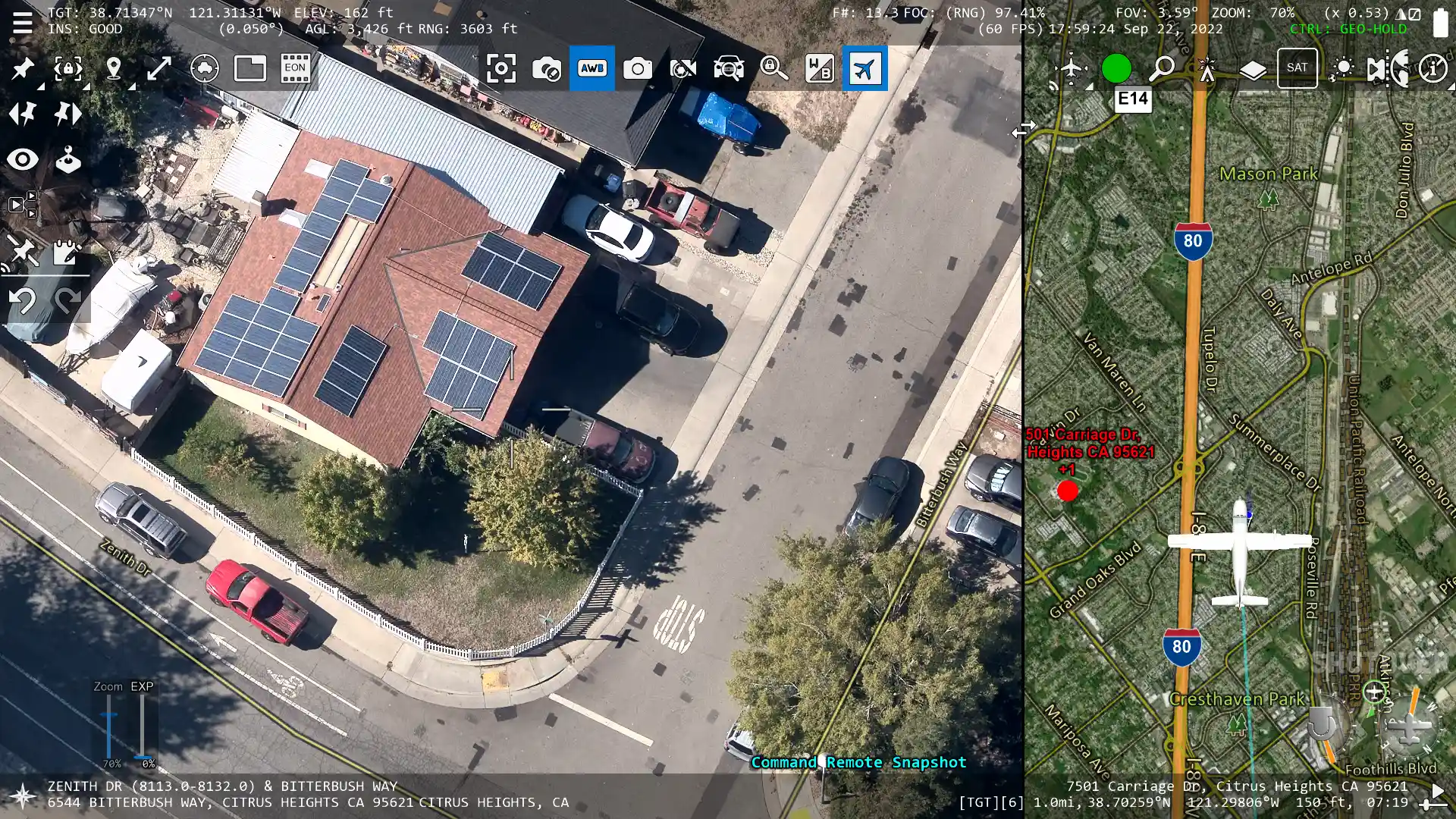
Tom Churchill advised that his company successfully built and flew with five functional ISR platforms over several years, but he was never satisfied with the resulting product. “Engineers all want to build great products, something spectacular, and we wanted to do the same thing with our navigation and mission management systems. Our experience showed that the major factor limiting ISR systems from reaching their ultimate development potential was the gimbal platform. I’m sure that what we built was good enough that many other companies would be happy to go to market with it, but it wasn’t where I wanted it to be and I knew that the Shotover products were,” he stressed. Kubis added, “It started years ago but was taking a lot of time and I joined the company three years ago to help execute that plan. Part of the strategy was that we could buy time through mergers and acquisitions, if we could find a company with a talented pool of engineers in a complimentary market segment that we could leverage into our vision to help execute the plan.”
That perspective led to a search for companies manufacturing stabilized platforms, with a particular emphasis on their personnel, as Kubis acknowledged that the most important factor in a successful enterprise is the people involved. This is where Shotover really entered the picture. The New Zealand company specialized in designing and building stabilized gimbal platforms for the motion picture and broadcast aerial filming industries. Although having never offered an ISR platform, Shotover’s advanced technology and engineering had rapidly earned it a reputation as the number one provider of high-end aerial filming gimbal systems, which it backed up with unparalleled customer and product support. Although Shotover had no experience in defense or law enforcement systems, that was a Churchill strength and the respective specialties of the two companies proved to be perfectly complimentary. “Churchill had already worked with Shotover for several years, adding mapping functionality to their gimbal platforms for non-defense applications,” Kubis explained. Shotover’s exceptional engineering and manufacturing expertise was a known quantity so when the opportunity arose to acquire the company it was obvious that a merger was an ideal option. “It helps them too,” Churchill explained. “A lot of the creative industry is now wanting or using augmented reality functionality, particularly in high-profile sporting event coverage. That’s where we can really help out because we have the expertise, the high precision geo-location and the augmented reality background.”
Tom Churchill is CEO under the new company structure, and he stressed that not only were both original companies highly engineering-centric, but they also both operated under very similar corporate cultures, commenting, “We both placed a huge emphasis on support. If you go to Hollywood and ask the filmmakers what they think of Shotover, they’ll all say that they offer a very high-quality product and back it up with exceptional support. That made it very easy for our two companies to get along with each other.” Interestingly, although Churchill Navigation bought Shotover, Tom Churchill chose to retain the Shotover brand for the merged venture. “Both companies had a very strong reputation within their respective markets, and I felt it would be easier for our customers to think of us as Shotover, than for Shotover customers to identify with Churchill Navigation. Also, the navigation aspect of our business has grown proportionally smaller over time.” Illustrating a refreshing humility, he added, “Churchill Navigation has always been strongly associated with me personally and as our company has grown, our offerings expanded and many more really good people are important to the company, it’s nice to not have it associated so strongly with me because I’m not the only one doing anything important.”
Churchill noted that being a smaller and newer company than the main industry players meant that while they lacked decades of experience, it provided some real advantages. “We don’t have the issue of maintaining backwards compatibility for customers with old, dated platforms and we don’t have an ingrained way of traditional thinking about how to solve problems. That’s how we started with augmented reality mapping. Back then, nobody was asking for street overlays, and they all used top-down, north-up maps. If we had asked what they wanted, they probably would have asked for a cheaper or faster map. They wouldn’t have asked for streets overlaid on video, so they didn’t have to look away from the bad guy to a different monitor, as they had never even envisaged that as a possibility.” The combined resources and expertise of the two companies facilitated a remarkably accelerated development schedule and just eighteen months after Churchill’s acquisition of Shotover, the new company’s M2 ISR platform was publicly revealed. A non-IR M1 surveillance platform was released even earlier, just six months after the merger. “One of our greatest advantages is that we now have electrical, mechanical and software engineers, all within our own organization,” Churchill noted.
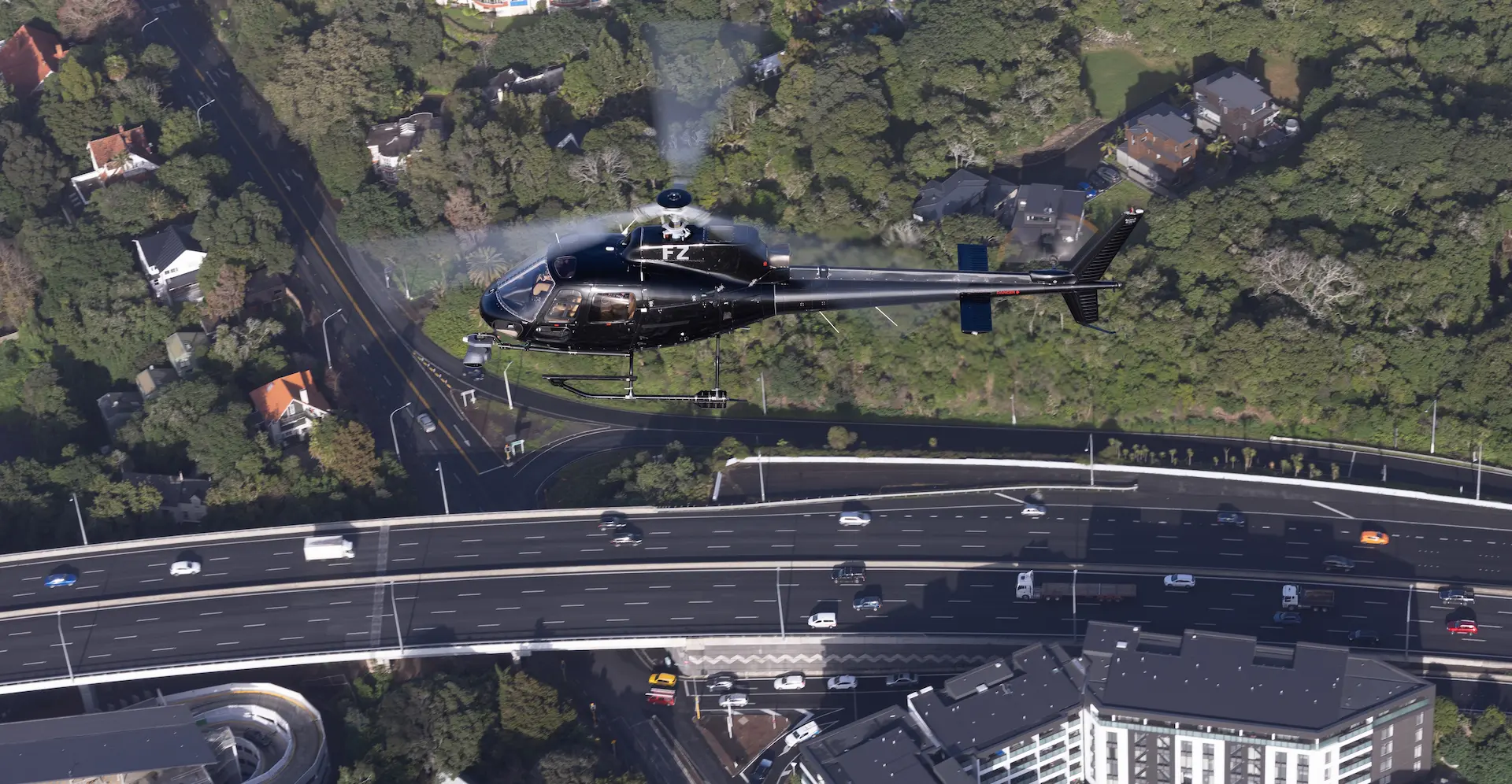
The law enforcement and defense markets are prime candidates for the new M2 platform, with Churchill’s experience in those markets providing familiarity with the features to build into a system that will be valuable to those customers. “For example, automatic license plate recognition is very difficult to achieve with traditional gimbals, even to be able to capture the plate in the first place, let alone have a computer automatically read it and then send it off to check against a national database,” he elaborated. Churchill then explained that Kubis had been primarily responsible for determining what features and functionality were desired for the new M2 platform, based on his twenty years of industry experience and extensive knowledge of what does and doesn’t work in real world application. “From our perspective it’s fairly straightforward. We need a daylight capability and a night-time thermal infrared capability so the first thing we do is evaluate the different products that are out there. We also want to maintain the heritage that Shotover already has, where it’s known for high quality video and exceptional stabilization at long distances,” he elaborated.
According to Churchill, Shotover took an opposite approach to industry stalwarts for their daylight camera technology. “Their platforms run a continuous zoom camera and when that reaches its zoom limit, it switches to a fixed-zoom or limited step-zoom camera. We have a wide field of view camera that is always on for situational awareness purposes, and then we have a very high-quality broadcast-style electronic news gathering refractive-optics lens, with a lot of zoom capability. That captures a high-quality picture, and we marry that with the latest generation imaging sensors to give an exceptionally high 4K video resolution and a 24-megapixel stills capability, anywhere throughout the focal range. It’s the sort of thing you can do when you have complete control over the internal electronics, which you can’t easily do when you’re using a third-party camera. We can’t control what type of sensor they use or get inside it to obtain extra resolution.” The M2 uses the latest Sony sensors to offer good low-light performance while still maintaining high resolution. Side by side comparison of the outputs of the M2 and competitor products immediately shows the superiority of the M2’s imagery, as Churchill emphasized. “There’s no question about that. It’s 4K video, using a newer imager with fully refractive optics. Looking at the image quality, the difference is like night and day!” There is a larger Sony sensor that offers even better low-light performance, but the fitted item’s smaller form factor and 24-megapixel stills capability made it the preferred option and still gives low-light performance superior to any of the competition.
For thermal imaging, Shotover has chosen what is known as ‘HOT technology’ cooled mid-wave infrared in the three-to-five-micron range, allowing for a focal plane array that requires far less cooling. It also incorporates a smaller pixel size that permits a narrower field of view with more detail for any given focal length. Churchill stated that the M2’s infrared performance is positioned between the capabilities of Wescam’s MX-10 and MX-15 camera systems, while the EO (daylight camera) performance surpasses that of the MX-20. “So we have outstanding daylight capability and very good infrared capability,” he concluded.
The Shotover gimbal offers full six-axis stabilization and positions the M2 way ahead of the competition in terms of image stability, as Churchill explained. “Six-axis stabilization offers two main benefits. Firstly, it is roll-stabilized so the picture maintains a consistent perspective orientation while the aircraft is orbiting around a target location. That is very different from what you see with a normal four-axis gimbal, where the picture on the screen is rotating back and forth all the time. The second advantage is look-down capability. When attempting to look straight down, a four-axis gimbal suffers from a phenomenon familiar to most law enforcement operators, known as ‘keyholing’ or gimbal lock. Due to the mechanics of the gimbal joints, the camera either won’t point down at all, or will go a little crazy trying to attain that orientation. This means that the crew is always trying to anticipate a suspect’s movement to avoid keyholing, but if it occurs, they risk losing the target. The gimbal’s design and geometry mean that that is not an issue that they will have with the M2.” The M2’s elimination of gimbal-lock and horizon-rolling is unique in the ISR industry.
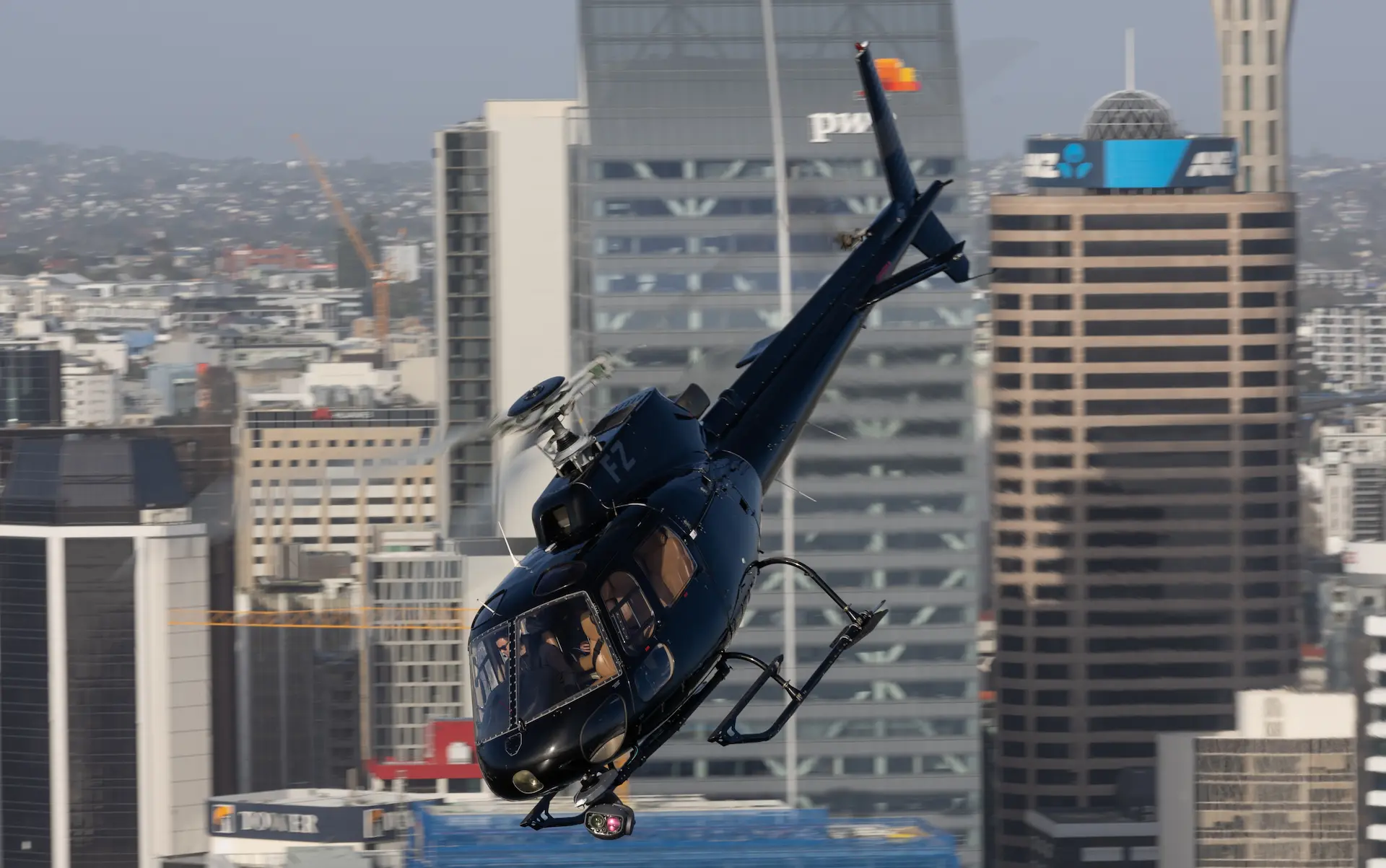
A high degree of automation is built into the M2 and its simulator function, with such features as geo-hold to remain focused on a specific location on the ground without further operator input, or scene-recognition hold to enable hands-free hold on selected objects or locations in view. Such simulator options are available from competitors but at additional cost, whereas the M2 comes all-inclusive. The platform offers unrivalled license-plate recognition and vehicle following capability, thanks to the integration of the high-definition imagery with software that effectively uses AI to capture and ‘memorize’ various aspect views of a vehicle to recognize it, even after a temporary loss of line-of-sight.
Complimenting the technical superiority of the M2 platform is the support that Shotover can provide. “We’re a smaller company than Wescam or FLIR so we give a little more attention to all of our customers. Most of Churchill’s customers already know the level of support we provide, having worked with us in our mapping system and that’s just not the way that some of these larger companies operate.” For international customers there is also the advantage that Shotover products are shipped out of New Zealand and are therefore not subject to ITAR (international traffic in arms regulations). The M2’s software and firmware can be updated remotely, a major benefit to customers around the world. “Inside most camera systems is an FPGA (field-programmable gate array) – a computer chip typically used for image processing,” Churchill observed, “But what I tell people is that they’re almost never actually updated in the field and that on the day you buy it, that FPGA is as good as it’s ever going to be. That’s largely true for most of the products in the market today, but it’s very different from the way our mapping system works and the way the M2 is designed.” He explained that the M2 was designed with the recognition that most of the value in today’s systems comes from the software, whether it be a cellphone, a doorbell or an ISR platform. “What will happen is that our gimbal – just like your iPhone – will hopefully get better and better over time. We have what we believe is a very good product today, but I can promise that we’ll continue to work on this to improve it.”
As the M2 evolves, any updates will be passed on to existing customers online, just as Churchill has been doing for years with its mapping customers. “We have customers that bought ARS mapping systems fifteen years ago, when the product was not nearly as advanced as it is today. Our products are at the higher end of the price spectrum because we want to deliver the best possible system, but because we provide service and support free for the life of the system, they have never had to purchase anything more from us to get all that extra capability. We’re not the cheapest product but I believe we offer outstanding value for what you spend,” commented Churchill. Unlike Shotover’s filmmaking gimbals, customers cannot open up the M2 to make changes as new technology develops. The platform has, however, been designed so that Shotover can do so to upgrade a customer’s sensor package as more advanced technology becomes available. “Historically, when new technology comes out, it means you have to buy a new camera system. With the M2 there will be the option in the future to upgrade the sensor without having to buy a new gimbal, and the first time we do that for a customer, it’s going to get a lot of people’s attention because it's so much less expensive than replacing the entire system.”
Launched just a day before the interviews for this article took place, the system has already garnered significant interest from potential users and customers, and the first M2 production units should be available from October 2022. “People have known that we’re working on something like this and whenever we come out with something new, that’s always of interest to our existing customers. Then there are people who are not yet our customers who are looking for alternatives to FLIR or Wescam, and not something less expensive but something that is actually better,” Churchill remarked. The 104lb (47kg) M2 is not suitable for every customer, as aircraft weight and size limitations come into play, but most operators with aircraft around the size of the MD530F or AS350 will have little or no difficulty incorporating the M2 into aircraft mission equipment.
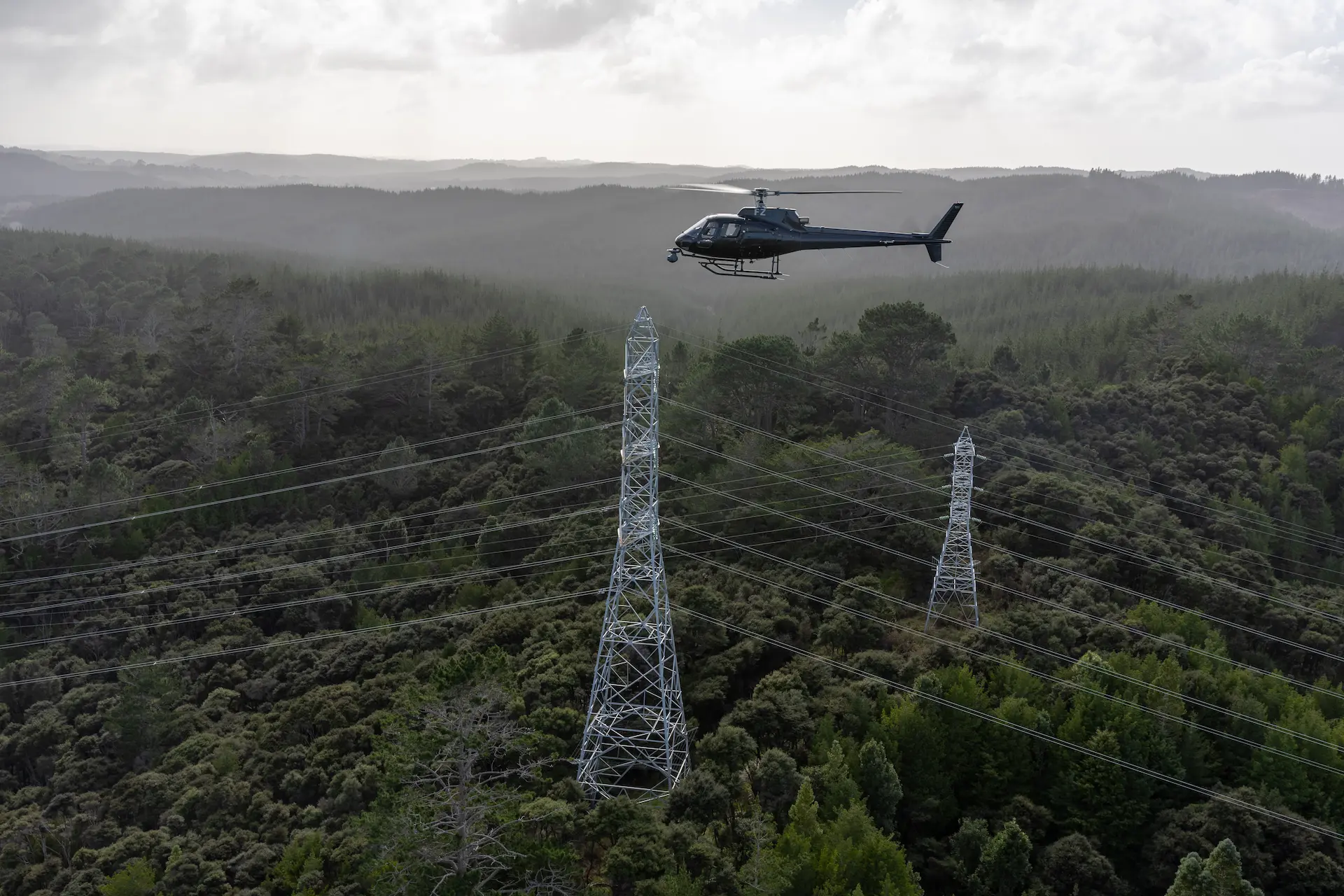
The physical configuration of the M2 is slightly unusual, in that it utilizes a form factor more like that of traditional moviemaking gimbals, and a single, slanted large front ‘window’, rather than the usual ISR practice of a smaller individual window for each sensor. “The reason is that we have large apertures as our lenses are very large compared to what you find in our competitors’ gimbals, so it was easier to fit a single large sapphire window,” Churchill explained. The M2’s hand controller can be an X-Box controller and although appearing at first to be somewhat incongruous, Churchill explained that in his opinion, it is the best controller available in the world today. “Companies like Sony and Microsoft spent years and years, and millions of dollars in researching and developing ergonomic, high-quality, durable interfaces for gaming consoles that sell many billions of dollars of product. Unless you can invest similar resources into developing a hand controller, there is a good chance it will never be as good as today’s commercially available gaming devices.” He noted though, that any device the computer recognizes as a controller can be plugged in and used, so more public-safety and military focused controllers have also been tested and are available, or customers can even use their existing Wescam or FLIR controllers.
While the M2 is offered in a standard configuration, Shotover will also consult with customers to determine their optimal sensor package and build specification, allowing for a degree of flexibility in the final product configuration for each customer. Several military organizations – including the US army and UK Ministry of Defense – already use Churchill Navigation ARS mapping systems and most operate ISR platforms, so the potential for Shotover ISR sales to military forces is apparent. Churchill acknowledged that the ISR market cannot be fully served by a single product, so he foresees the company eventually building a full range of ISR platforms, both smaller and larger than the M2 to cover the complete range of customer requirements. “Shotover already has a history of building new versions of their gimbals, starting with the K1 and going on to the F1, M1 and B1, so building gimbals to suit different applications and markets is already in their wheelhouse. On our side, we’ve been developing the software for this for the last seven years. We’ve also been working with Shotover for years with various television stations around the country,” Churchill recounted, explaining why the expansion of the ISR product line is a natural step for the company, and why it was possible to bring the M2 (and it’s non-IR M1 sibling) to market so quickly.
The exterior of the first units is a distinctive and not overly bright, military grey ceramic coating but customers will have their choice of external colors and can select from a ceramic, powder-coated or anodized exterior finish. The US$650,000 purchase price includes a gimbal simulator – allowing TFOs to gain operational proficiency on the ground, without having to fly – and the integrated ARS mapping software. That makes it price-comparable with a Wescam MX-10 or a FLIR 3D-HDc camera system, both of which Churchill believes the M2 easily out-performs. The lifetime service and support that is also included makes the relative value of the M2 system obvious, and Shotover tops it off with a one-year, 100% money back guarantee. Market penetration in the ISR sector is seldom rapid, as existing platforms are usually only replaced roughly once a decade, but for new customers or customers with existing systems nearing replacement, the Shotover M2 has to be at the forefront of consideration.
 HOME
HOME


